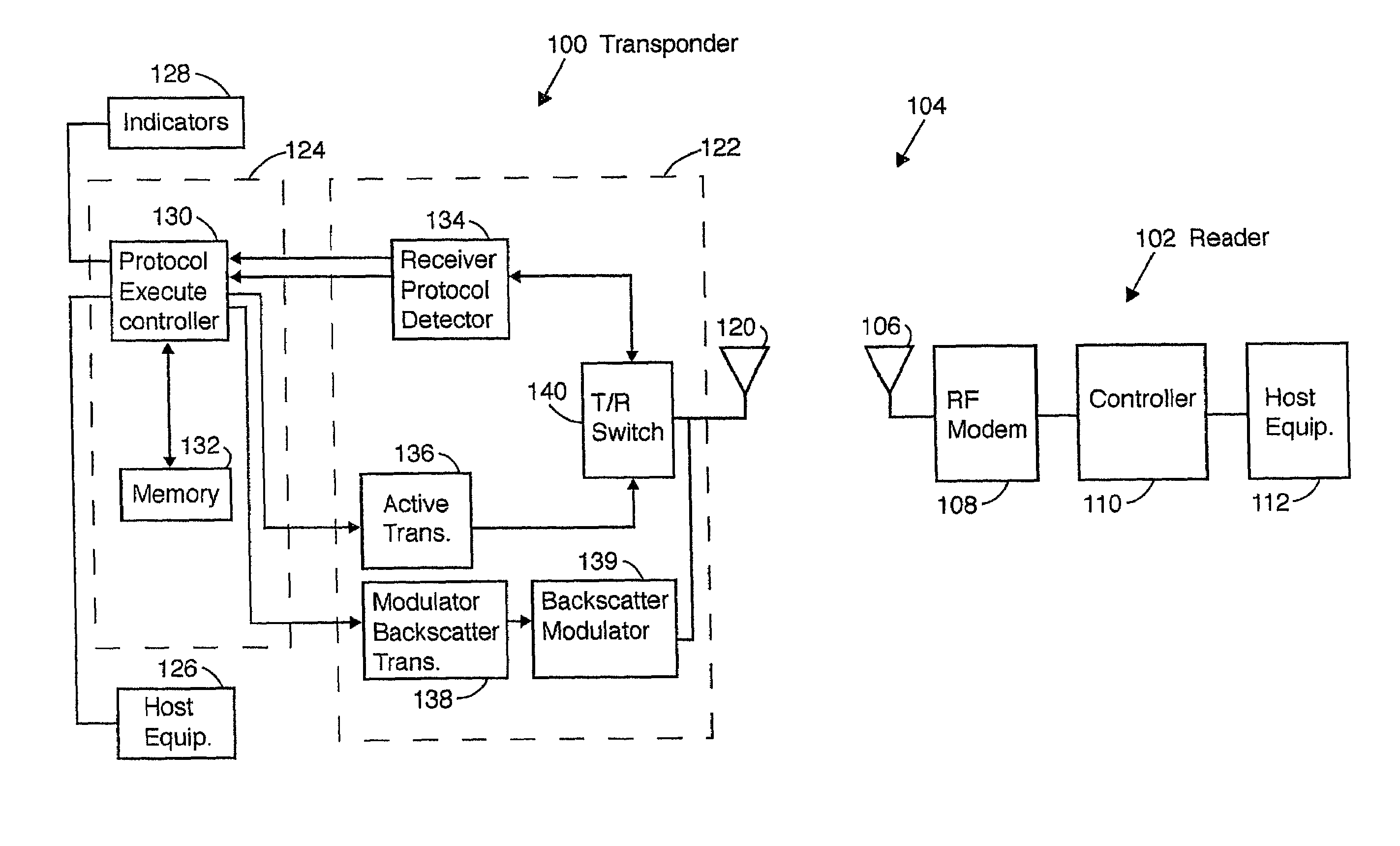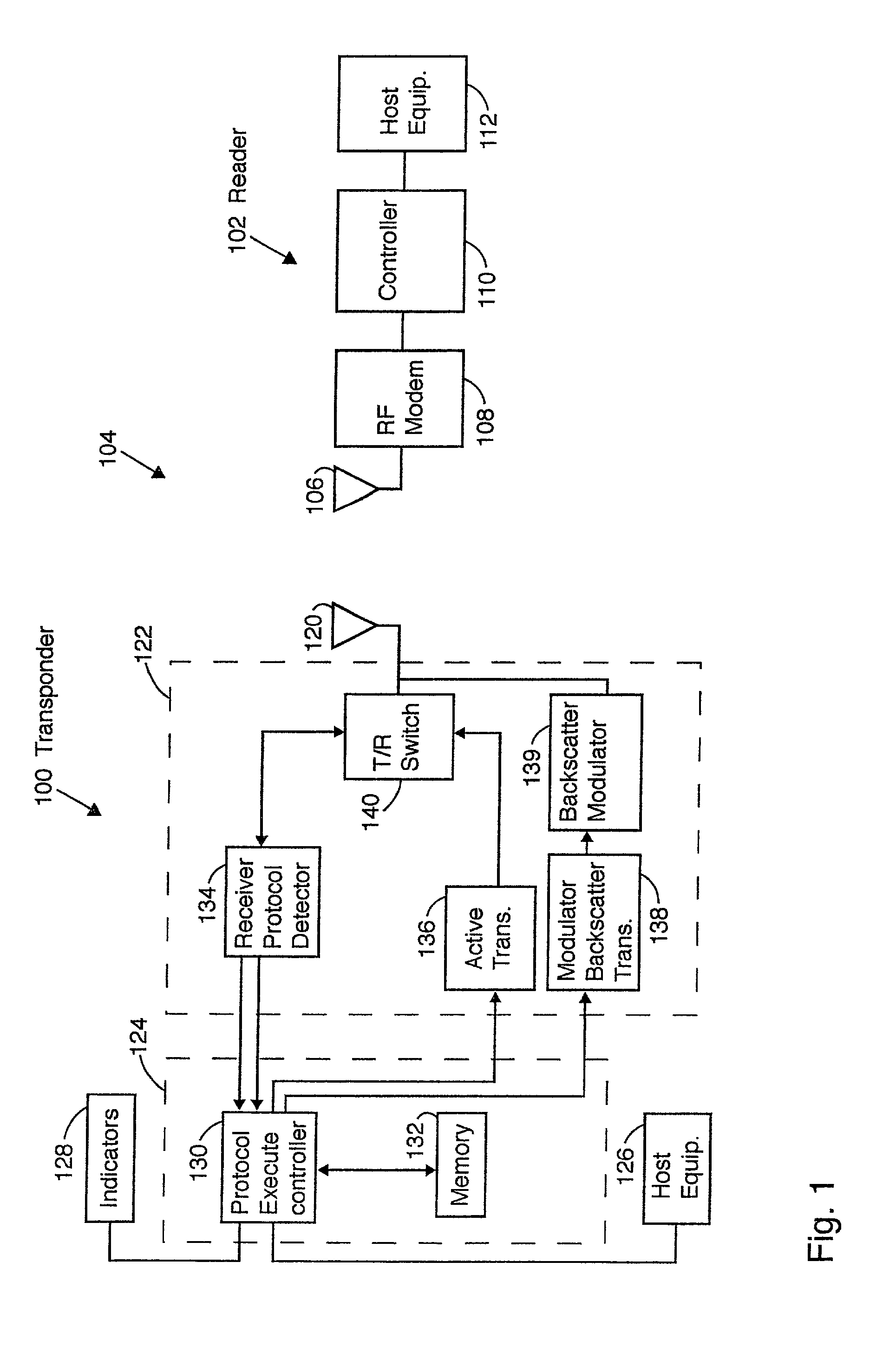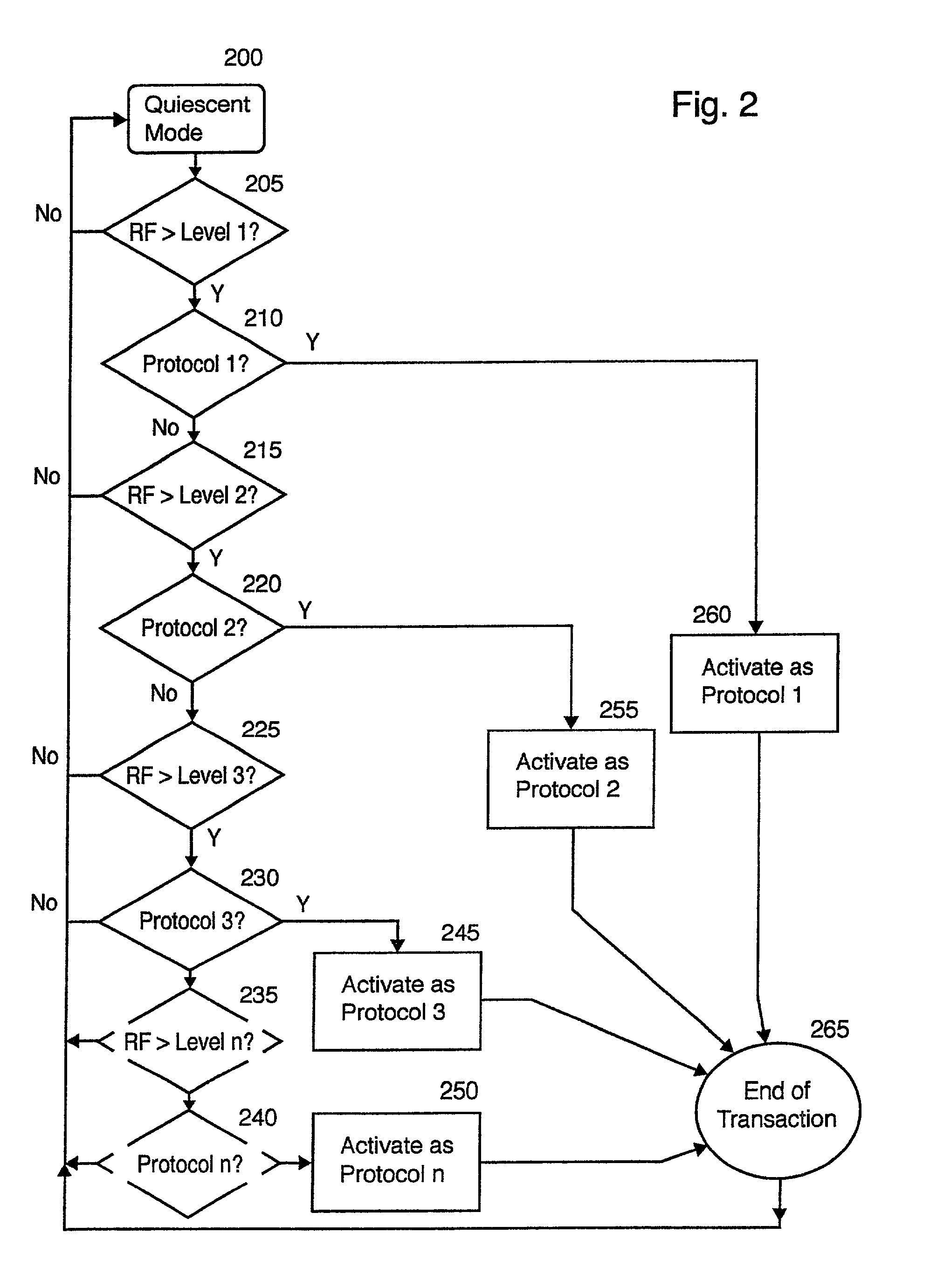Multiple protocol transponder
a transponder and multi-protocol technology, applied in the field of short-range communications networks, can solve the problems of inability to agree on a standardization path, inability to fully implement,
- Summary
- Abstract
- Description
- Claims
- Application Information
AI Technical Summary
Benefits of technology
Problems solved by technology
Method used
Image
Examples
Embodiment Construction
[0031]With reference to FIG. 1, the invention is embodied in a transponder 100 of the type used in short range RF communications with a reader 102 in a reader-transponder communications network 104. Such systems may be useful to automatically identify vehicles on a roadway, reducing restrictions on traffic flow. Readers 102 are typically stationary, set in a suitable location as Roadside Equipment. Transponder 100 is typically mounted in a vehicle that passes within the range of the reader 102 to permit communication and identification of the transponder. It is understood that the term vehicle has a wide application including, a motorized carrier such as a truck, motorcycle, automobile, ship or a transported carrier such as a cargo container. Alternately, the transponder may be stationary and a mobile reader brought within the range of the transponder, for example where an automobile may be parked and a hand held reader drawn near for communications.
[0032]Communications between the ...
PUM
 Login to View More
Login to View More Abstract
Description
Claims
Application Information
 Login to View More
Login to View More - R&D
- Intellectual Property
- Life Sciences
- Materials
- Tech Scout
- Unparalleled Data Quality
- Higher Quality Content
- 60% Fewer Hallucinations
Browse by: Latest US Patents, China's latest patents, Technical Efficacy Thesaurus, Application Domain, Technology Topic, Popular Technical Reports.
© 2025 PatSnap. All rights reserved.Legal|Privacy policy|Modern Slavery Act Transparency Statement|Sitemap|About US| Contact US: help@patsnap.com



